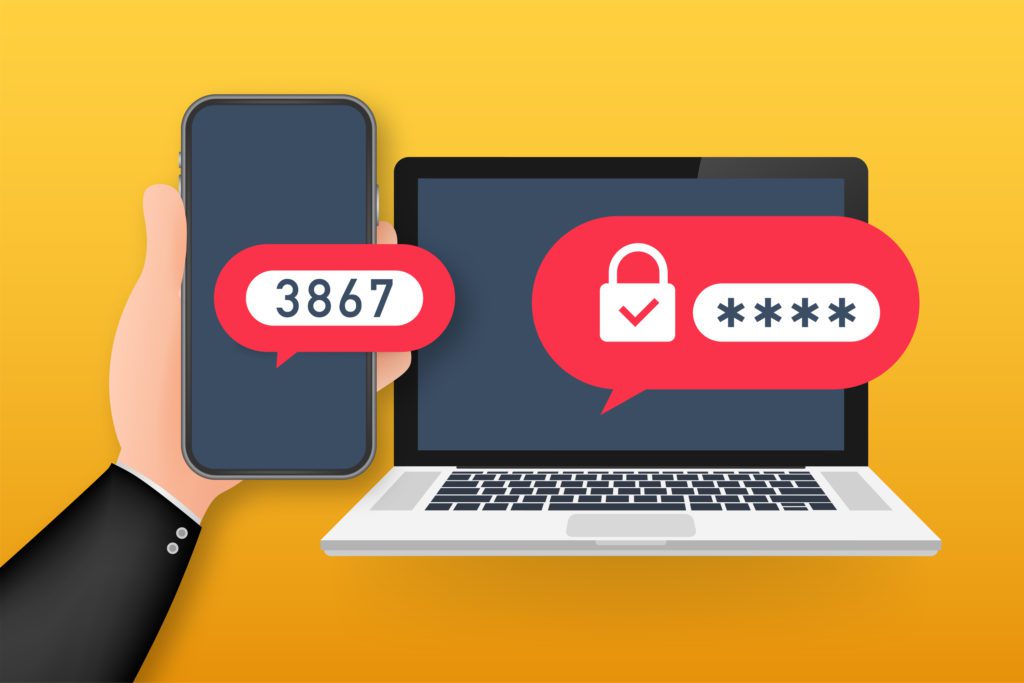
Cybercriminals follow the data when planning their attacks, and lately, that’s meant more attacks on company cloud accounts. Even before the pandemic, companies in Idaho and around the world were transitioning more of their work processes and files to the cloud. The pandemic just accelerated this process.
In 2020, there was a 630% increase in cloud account attacks, which illustrates the necessity of putting strong security protections in place to safeguard your SaaS and web accounts.
Just one breach of a cloud account that includes email (like Microsoft 365 or Google Workspace) can lead to a major phishing attack being launched from your domain. A breach of an online banking login can be devastating financially and take years to recover from.
There is a lot of confidential information behind your weakest user password, which is why it’s important to enact one of the strongest cloud account protections, multi-factor authentication (MFA).
With a success rate of 99.9% for blocking fraudulent sign-ins, MFA is a must-have safety measure.
Yet many companies don’t use it because of employee pushback. Workers complain that MFA is inconvenient, and they don’t like the change to such a big part of their workflow.
But if you use best practices for MFA implementation, you can overcome user resistance and create a much stronger infrastructure for your cloud security. Here are ways to do that.
1. Utilize Change Management Tactics
You might see implementing MFA as a small update to how you do things now, but any change in workflow is a big change to the employees that must adopt it.
Change management is a practice that is designed to guide users through any type of organizational transition. Using strategies of change management can increase the success of a project by 6x.
Using these tactics with your MFA implementation can help you increase employee acceptance:
- Bring users in early on the change project
- Identify areas of user resistance
- Address resistance by explaining how the change benefits the person
- Provide ongoing communications
- Provide adequate user training
- Follow up after implementation with support
2. Give Employees MFA Options
When users aren’t given any options, it can make them resent an implementation of multi-factor authentication.
There are a few different ways that the user can receive the MFA code or authenticate in another way, which means that you can give users some options. Giving them options helps them feel more ownership of the process and can reduce their resistance.
Some of the different options for MFA implementation include:
- Receiving a code by SMS
- Receiving a code through a device app
- Using a security key to authenticate
- Using biometrics to authenticate
3. Use Contextual Triggers for More Convenience
Using contextual triggers along with MFA can help you both increase security and make MFA more convenient.
By contextual triggers, we mean using factors like:
- The location of someone when logging in
- The device a person is using
- The IP address/Wi-Fi being used
- The time of day of the login (e.g., is it after hours?)
You can put in safeguards that provide additional authentication requirements based on those contextual factors (such as if someone is logging in from outside the country). This means that you could also offer fewer challenges to users that are on your company network, for example, reducing the hoops they need to jump through to authenticate.
4. Couple MFA with Single Sign-On (SSO)
Employees push back on MFA the most because of the additional time they say it will take them to log into all their work applications. If they have to log into them all separately, then it’s true that it will take them a few seconds more. Though the increase in security is generally worth it.
But, if you use an SSO application along with an introduction of MFA, you can actually decrease the time it takes employees to log into their work apps each day.
Single sign-on applications connect to your various cloud apps. It allows users to sign in and authenticate once with MFA to access all the other connected applications. This is a significant time savings.
5. Don’t Immediately Give Up at the First Sign of Resistance
If you begin getting complaints after initiating multi-factor authentication, don’t immediately throw in the towel. Instead, dig down into user concerns and then work with your IT professional to help address and overcome those.
Any change takes time for users to adapt to, so you need to give them enough time to change their habits and get used to the new system.
Learn More About Implementing MFA and SSO Together
Connect2Geek can help your Treasure Valley business with secure and convenient account access strategies to improve cloud security without slowing down your users.
Schedule your free consultation to learn more today! Call 208-468-4323 or reach out online.
